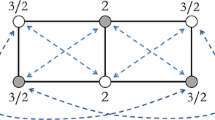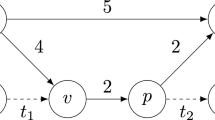Abstract.
The classical game of Peg Solitaire has uncertain origins, but was certainly popular by the time of Louis XIV, and was described by Leibniz in 1710. The modern mathematical study of the game dates to the 1960s, when the solitaire cone was first described by Boardman and Conway. Valid inequalities over this cone, known as pagoda functions, were used to show the infeasibility of various peg games. In this paper we study the extremal structure of solitaire cones for a variety of boards, and relate their structure to the well studied metric cone. In particular we give:¶1. an equivalence between the multicommodity flow problem with associated dual metric cone and a generalized peg game with associated solitaire cone;¶2. a related NP-completeness result;¶3. a method of generating large classes of facets;¶4. a complete characterization of 0-1 facets;¶5. exponential upper and lower bounds (in the dimension) on the number of facets;¶6. results on the number of facets, incidence and adjacency relationships and diameter for small rectangular, toric and triangular boards;¶7. a complete characterization of the adjacency of extreme rays, diameter, number of 2-faces and edge connectivity for rectangular toric boards.
Similar content being viewed by others
Author information
Authors and Affiliations
Additional information
Received: July 1996 / Accepted: February 2000¶Published online February 22, 2001
Rights and permissions
About this article
Cite this article
Avis, D., Deza, A. On the solitaire cone and its relationship to multi-commodity flows. Math. Program. 90, 27–57 (2001). https://doi.org/10.1007/PL00011419
Issue Date:
DOI: https://doi.org/10.1007/PL00011419




